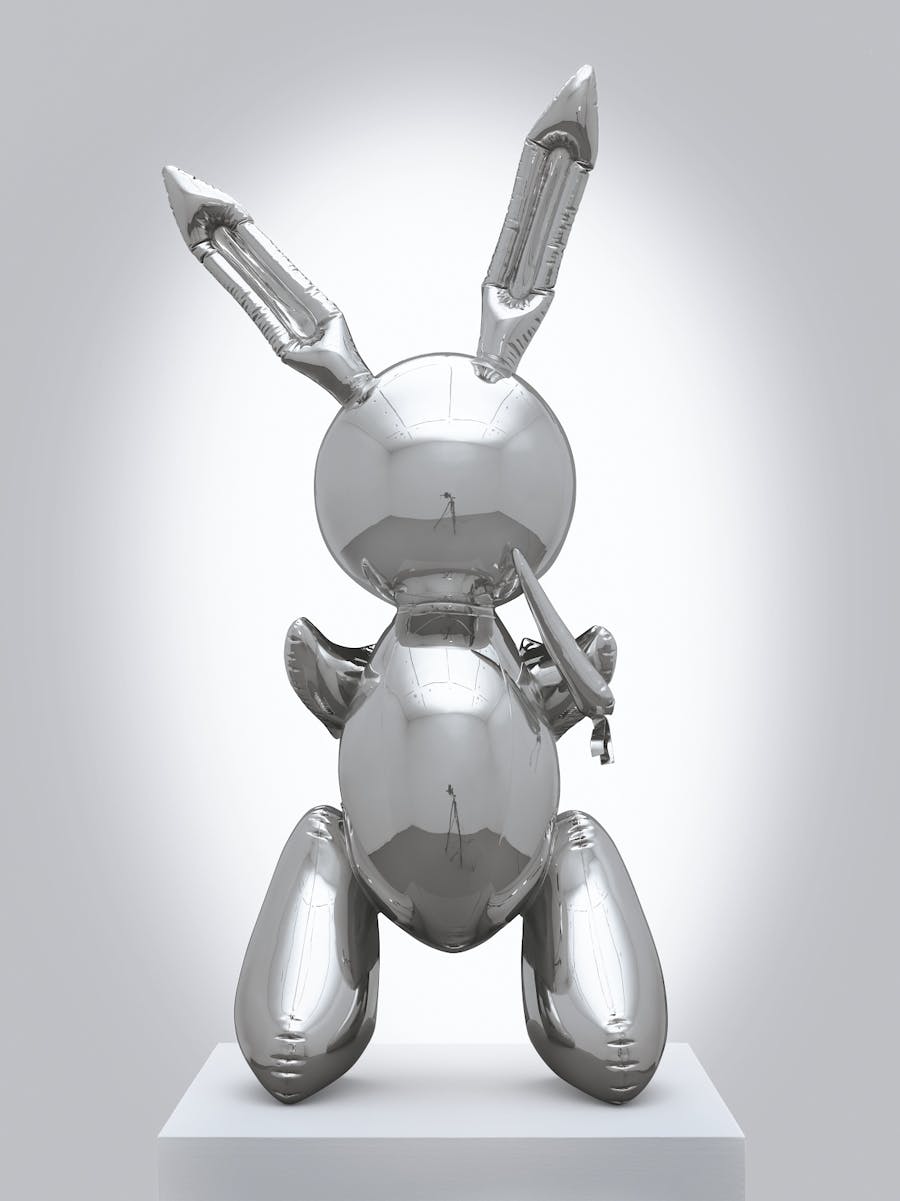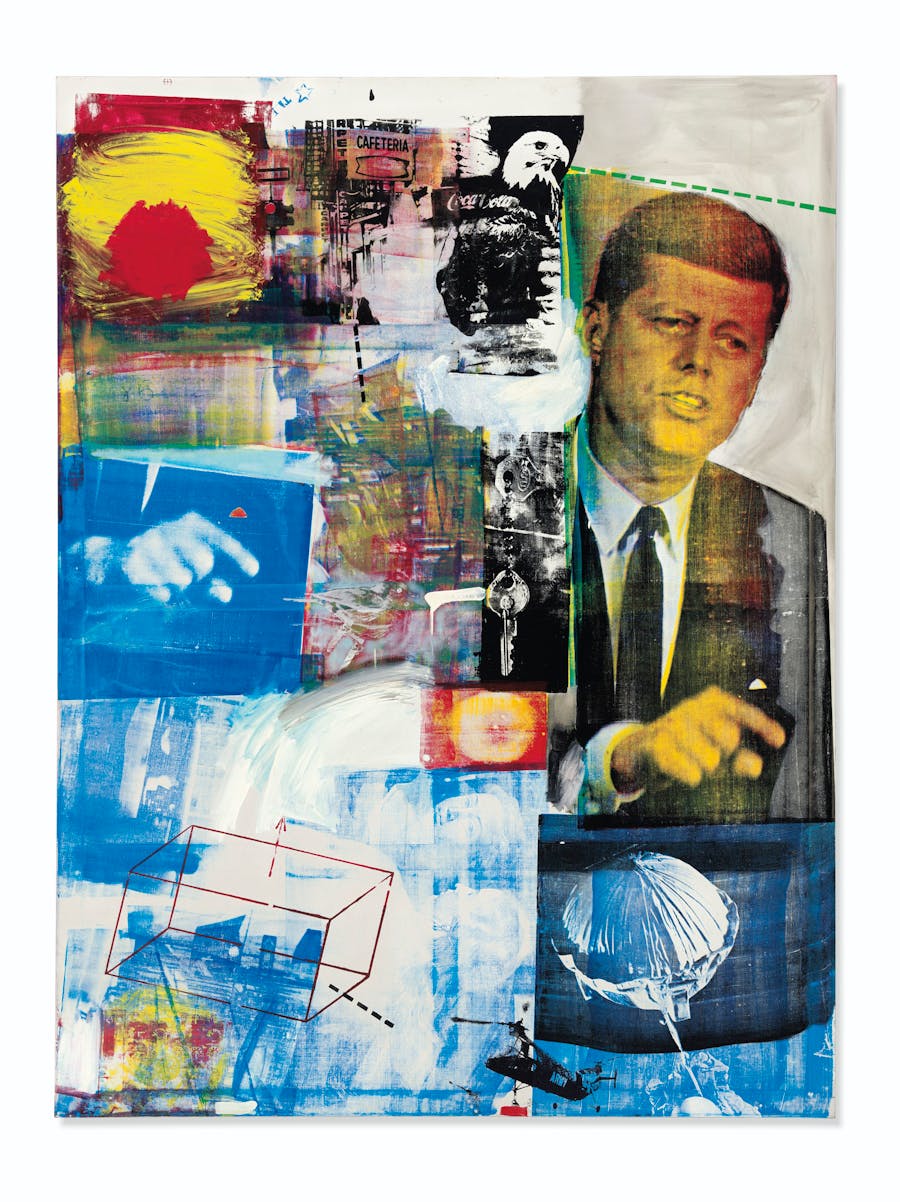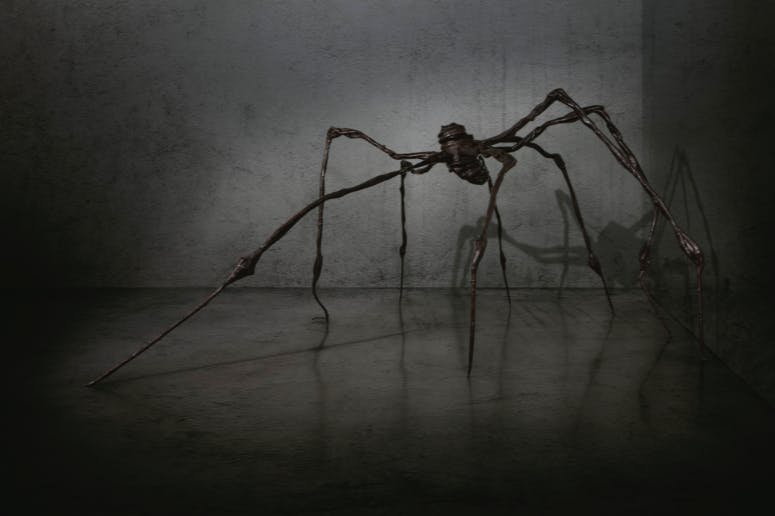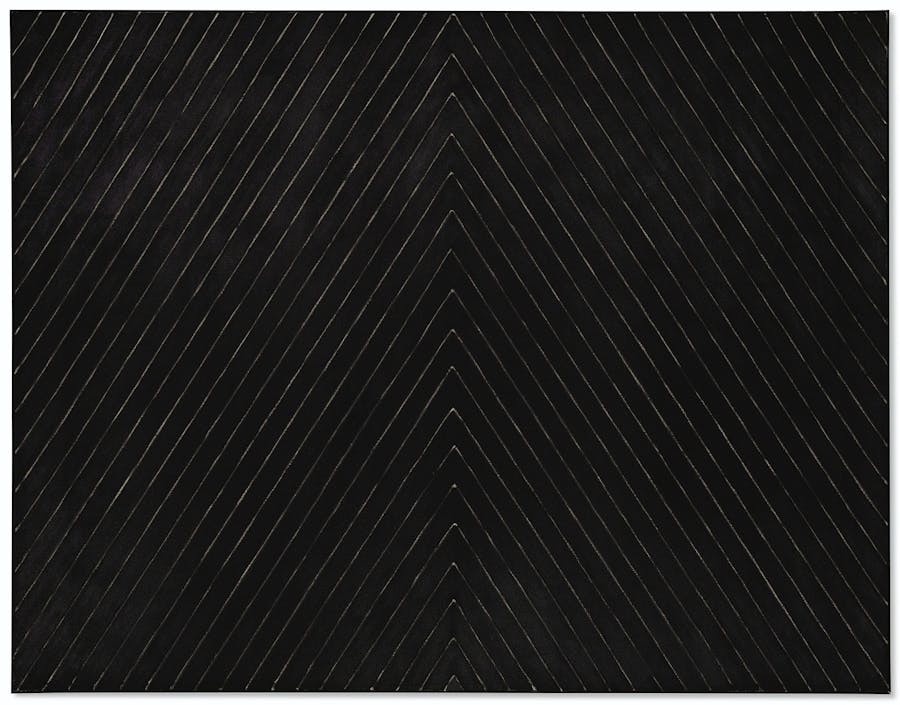Jeff Koons is the Most Expensive Living Artist (Again)
On May 15, 2019, Jeff Koons took back the title of the most expensive living artist when his 'Rabbit' sold for $91.1 million at Christie's.
Since May 2013, Jeff Koons was the most expensive living artist after his large-scale Balloon Dog sold for $58.4 million at Christie's. Then, five years later, David Hockney resoundingly dethroned him when Portrait of an Artist (Pool with Two Figures) achieved $90.3 million at the Christie’s November auction in 2018.
But on May 15, 2019, Jeff Koons edged out Hockney's record to once again become the world's priciest living artist when Rabbit, his original stainless steel inflatable from the mid-1980s, sold for $91.1 million at Christie's Post War and Contemporary Art auction.
The 3.4-foot-high Rabbit, which entered the auction room with an estimate of $50-70 million, was particularly notable because it was the very first Koons inflatable to be cast in stainless steel, which is now the artist's most recognizable art form. It was also the only one in the original series of three (plus an artist's proof) that was still privately owned (the others are in public collections of The Broad in LA, the Museum of Contemporary Art in Chicago and the National Museum of Qatar).

The iconic sculpture first debuted in 1986 at New York's Sonnabend Gallery and transformed the future of contemporary art. Alex Rotter, the Chairman of Post-War and Contemporary Art at Christie's, mused, "For me, Rabbit is the anti-David. It signaled the death of traditional sculpture and disrupted the medium in the same way that Jackson Pollock's Number 31 permanently redefined the notion of painting."
Related: The 10 Most Expensive Living Artists
It was the most prized work in the collection of Si Newhouse Jr., the late billionaire publishing heir of the Condé Nast empire, and was prominently displayed in his New York apartment until his death in October 2017. Eleven works from Newhouse's collection appeared at auction at Christie's this May – and totaled over $216 million in sales, which also included a Paul Cézanne still life ($59 million) and a Vincent Van Gogh landscape ($40 million).

But Jeff Koons wasn't the only record-breaker at the Christie's evening sale. Robert Rauschenberg's large-scale painting Buffalo II (1964) set a new record for the artist when it sold for $88.8 million. The seminal work on oil and silkscreen depicts some of the most recognizable images of the early sixties: President John F. Kennedy, space exploration, the American bald eagle and a Vietnam War-era army helicopter, and it combines elements of what was the emerging genre of Pop Art and the color blocking of abstract art. Rauschenberg debuted the work at the Venice Biennale in 1964 and won the prestigious Grand Prize for Painting for it, the first American to do so. Beatrice Mayer, the heiress to the Sara Lee baking fortune, and her husband, Robert, acquired the work in 1965, and it had been in their collection for the past five decades, until Beatrice's death last September.
Related: The 10 Most Expensive Sculptures Sold at Auction

An artist's record was also set for Louise Bourgeois when her iconic Spider (1996) became the most expensive sculpture by a contemporary female artist, selling for $32 million. Gracefully perched in a threatening pose, Spider seems poised to attack at any moment, while one of the legs stretches forward to reach its prey. Triggering a panel of emotions ranging from childish reverie to primary fear, the spider is a deeply personal creation for Bourgeois, who associated the arachnid with the maternal figure.

In addition, contemporary artist Frank Stella's Point of Pines (1959) achieved $28 million, shattering his previous record of $13.7 million. The work was part of his ‘Black Paintings’ series, a pre-cursor to the colorful geometric works for which he is most recognized today. The black enamel painted canvas with hand-drawn stripes appears simple and monochromatic, but, in actuality, required intense focus to make the stripes appear straight though done by hand. One of Stella's first works – it was painted when the artist was only 23 – Point of Pines was both a rejection of Abstract Expressionism and a premonition of the repetition and pattern that Pop Art would promote in the coming decade.
The Post-War and Contemporary Art auction totaled $538.9 million, closing out Christie's major May sales.


